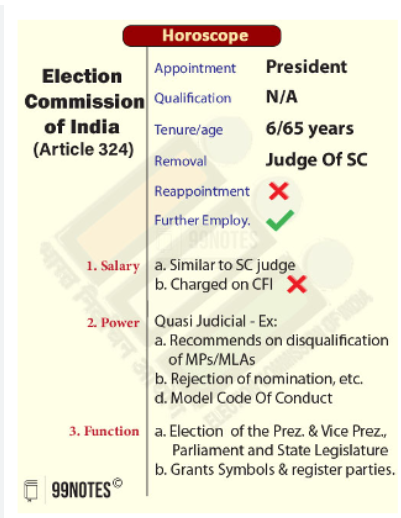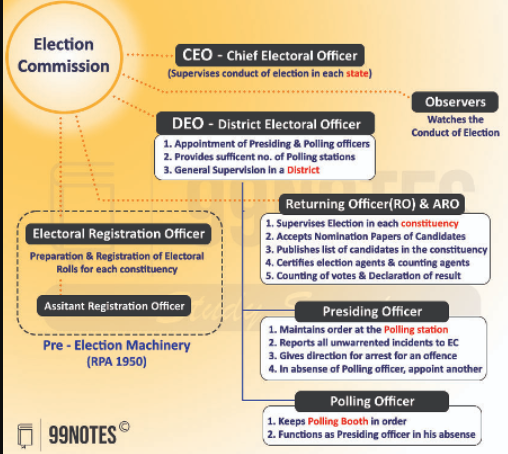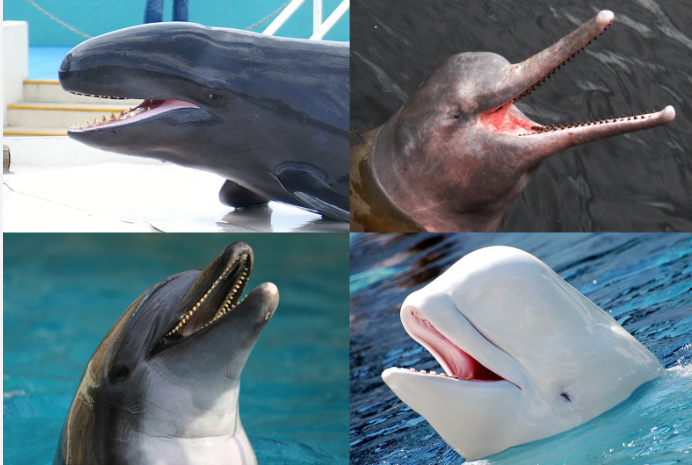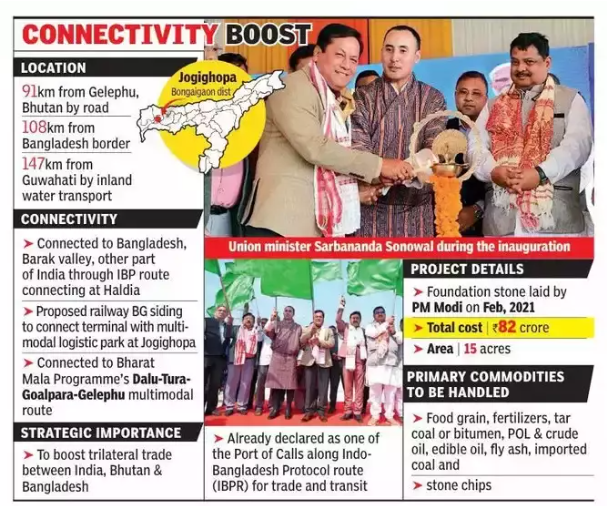19 February 2025 : Daily Current Affairs
1. In landmark talks, Russia, U.S. agree to work towards ending the war in Ukraine
- 1. In landmark talks, Russia, U.S. agree to work towards ending the war in Ukraine
- 2. Iran FM, Houthi envoy discuss Nimisha case
- 3. India-Qatar Relations Elevated to Strategic Partnership
- 4. Gyanesh Kumar Appointed as Chief Election Commissioner: Process, Controversy, and Legal Implications
- Prelim Facts
- 1. Centre revamps websites, creates multilingual AI hub for better scheme outreach
- 2. Government Considers Raising Bank Deposit Insurance Limit Amid RBI Action on New India Co-operative Bank
- 3. Humpback Whale Accidentally Engulfs Kayaker in Chile
- 4. PM applauds inauguration of Inland Waterways Terminal at Jogighopa, Assam
(Source – The Hindu, Front Page- Page No. – 1)
| Context |
|
Key Agreements Between Russia and the U.S.
- The U.S. and Russia have agreed to work towards ending the war in Ukraine and improving diplomatic and economic ties.
- U.S. Secretary of State Marco Rubio outlined three goals: restoring embassy staffing, creating a high-level team for Ukraine peace talks, and exploring economic cooperation.
Exclusion of Ukraine in Talks
- No Ukrainian officials were present at the meeting, raising concerns from Ukraine and European allies.
- President Volodymyr Zelenskyy insisted that Ukraine must be included in any negotiation outcome.
- European leaders expressed worries about being sidelined and emphasized that Europe must be part of the discussions.
U.S. and European Reactions
- The U.S. acknowledged that ending the conflict would require concessions from all sides, including European involvement.
- European leaders vowed to increase defense spending and consider deploying troops in Ukraine.
- French President Macron called for emergency talks, revealing tensions within Europe on the issue.
- German Chancellor Scholz opposed troop deployment, while British PM Keir Starmer supported it.
Russia’s Standpoint
- Russian Foreign Minister Lavrov emphasized that the U.S. has begun to better understand Russia’s position.
- Kremlin spokesperson Peskov reiterated Russia’s readiness for peace talks, highlighting the need for a comprehensive security framework in Europe.
Implications for U.S.-Russia Relations
- The meeting aimed to pave the way for a summit between Trump and Putin, though no date was set.
- The U.S. acknowledged that any settlement requires European involvement due to existing sanctions.
Changing Geopolitical Landscape
- NATO and the EU are reconsidering their defense strategies in response to shifting U.S. policies.
- NATO chief Mark Rutte emphasized Europe’s willingness to step up.
- EU Commission chief Ursula von der Leyen called for increased defense spending.
Internal Divisions in Europe
- Some leaders, like Italian PM Meloni, opposed troop deployment, calling it ineffective.
- Latvian President Rinkevics warned against complacency in strengthening defense.
Broader Strategic Concerns
- European analysts view the shift in U.S. policy as a “make or break” moment for transatlantic security.
- Some experts believe Europe must increase its defense capabilities independently as the U.S. reassesses its global role.
Conclusion
- The diplomatic shift signifies a potential realignment in global power dynamics.
- While discussions have started, challenges remain in achieving a unified European stance and resolving the Ukraine crisis.
2. Iran FM, Houthi envoy discuss Nimisha case
(Source – The Hindu, State- Page No. – 3)
| Context |
|
Recent Developments
- Iranian Foreign Minister Abbas Araghchi intervened in the case after meeting Indian External Affairs Minister S. Jaishankar in Muscat.
- Araghchi later discussed the matter with Mohammed Abdul Salam, a senior envoy of the Houthi group (Ansar Allah), which controls parts of Yemen.
- The Iranian minister expressed hope for a resolution, stating that Abdul Salam assured him of efforts to find a way forward.
Family’s Efforts
- Ms. Priya’s family claims she was assaulted and abused by Mahdi for years.
- They have launched an international clemency campaign and started collecting reparations or “blood money” as per Islamic law, which could allow for a pardon.
Indian Government’s Position
- The Ministry of External Affairs (MEA) stated that the Indian government is providing all possible assistance but emphasized that the final decision rests between the victim’s family and Ms. Priya’s family.
- Civil society organizations in Kerala have criticized the government for not doing enough to secure her release.
Diplomatic Significance
- Iran holds considerable influence over the Houthis, which could help in negotiating clemency.
- Earlier this year, a senior Iranian official visiting Delhi had assured support to India’s efforts in the case.
Legal Challenges
- Iranian Foreign Minister Abbas Araghchi emphasized that this is a legal case, not a political one.
- He stated that finding an alternative legal argument is essential to preventing her execution.
Conclusion
The case of Nimisha Priya remains a complex legal issue, with diplomatic efforts ongoing and Iran’s intervention offering a potential path toward clemency, but a resolution depends on legal negotiations and reparations under Yemeni law.
3. India-Qatar Relations Elevated to Strategic Partnership
(Source – Indian Express, Section – The Cover Page – Page No. – 01)
| Context |
|
Analysis of the news:
Strategic Partnership and Trade Expansion
- India and Qatar have upgraded their relationship to a strategic partnership, reflecting deeper cooperation in trade, investment, and energy.
- The two countries set a target to double bilateral trade from USD 14 billion to USD 28 billion by 2030.
- Qatar also committed to invest USD 10 billion in India, focusing on infrastructure, ports, renewable energy, smart cities, start-ups, and advanced technologies like artificial intelligence and robotics.
Energy Cooperation and Long-term LNG Supply
- Energy remains a crucial pillar of India-Qatar relations. Qatar, a significant supplier of Liquefied Natural Gas (LNG) to India, will supply 7.5 million metric tonnes per annum for 20 years starting 2028, ensuring India’s long-term energy security.
Exploring Free Trade Agreements (FTA)
- Both nations discussed the potential for a Free Trade Agreement (FTA) between India and Qatar, complementing India’s ongoing FTA negotiations with the Gulf Cooperation Council (GCC).
- This could further enhance economic ties and streamline trade regulations.
Security and Counterterrorism Cooperation
- The leaders unequivocally condemned terrorism in all forms, agreeing to bolster cooperation in intelligence sharing, cybersecurity, anti-money laundering, and combating transnational crimes.
- Regular meetings of the Joint Committee on Security and Law Enforcement were emphasized to strengthen these efforts.
Diplomatic and People-to-People Relations
- Acknowledging the Indian diaspora’s contribution to Qatar’s development, both sides expressed appreciation for the welfare measures provided to the Indian community.
- Additionally, two agreements and five MoUs were signed, covering economic cooperation, youth affairs, investment, and a double taxation avoidance agreement.
Regional Stability and Pending Diplomatic Issues
- The leaders exchanged views on West Asia’s evolving situation, including the Israel-Hamas conflict, highlighting regional peace and security concerns.
- The pending case of a former Indian Navy officer in Qatar was also discussed, with India appreciating Qatar’s cooperation in ensuring the welfare of Indian nationals.
Conclusion
- The elevation of India-Qatar ties to a strategic partnership marks a significant step towards deeper cooperation in trade, energy, security, and regional stability, paving the way for strengthened economic growth and diplomatic relations in the coming years.
| What is the significance of India-Qatar Relations? |
|
| Practice Question: How can the government ensure that the fertilizer subsidy program remains environmentally sustainable while supporting the economic needs of farmers? (150 Words /10 marks) |
4. Gyanesh Kumar Appointed as Chief Election Commissioner: Process, Controversy, and Legal Implications
(Source – Indian Express, Section – Explained – Page No. – 18)
| Topic: GS2 – Polity |
| Context |
|
Analysis of the news:

Background of Appointment Process
- The Election Commission of India (ECI) is a three-member body consisting of one Chief Election Commissioner (CEC) and two Election Commissioners (ECs).
- Traditionally, the CEC was appointed by the President based on the Prime Minister’s advice, with seniority playing a key role.
- However, the new Chief Election Commissioner And Other Election Commissioners (Appointment, Conditions of Service And Term of Office) Act, 2023, has altered this process.
The New Appointment Process:
Under the 2023 Act, a two-step process was introduced:
- Search Committee: Headed by the Law Minister, this committee shortlists five candidates.
- Selection Committee: Comprising the Prime Minister, Leader of Opposition, and a Cabinet Minister nominated by the PM, this committee makes the final appointment. Notably, Section 8 allows the committee to consider candidates beyond the initial shortlist.
Why Opposition Objected?
- Rahul Gandhi submitted a dissent note during the appointment meeting, urging the government to postpone the appointment until the Supreme Court resolves petitions challenging the new process.
- His objection is rooted in the exclusion of the Chief Justice of India (CJI) from the selection panel, which was initially recommended by the Supreme Court.
Supreme Court’s Role and Concerns
- The Supreme Court had earlier directed that until a law is enacted, a panel including the PM, LoP, and CJI should appoint the CEC and ECs.
- The government’s new law replaced the CJI with a Cabinet Minister, raising concerns about executive dominance in the appointment process.
- Petitions challenging this change are pending before the Supreme Court.
Eligibility and Tenure Under the New Act
- The Act now clearly outlines eligibility: candidates must have held a post equivalent to the rank of Secretary to the Government of India and possess integrity and election management experience.
- Additionally, no re-appointments are allowed, and the total tenure for an EC who becomes CEC is capped at six years.
Constitutional and Legal Implications
- The key constitutional question is whether Parliament can override a Supreme Court judgment through legislation.
- The Supreme Court has assured that its eventual decision will apply retrospectively, affecting appointments made in the interim.
Conclusion
- While Gyanesh Kumar’s appointment follows the newly enacted process, its legitimacy remains subject to the Supreme Court’s upcoming ruling.
- The outcome will have significant implications for the balance of power between the Executive, Legislature, and Judiciary in India’s electoral governance.

| Practice Question: Discuss the constitutional and legal implications of the Chief Election Commissioner And Other Election Commissioners (Appointment, Conditions of Service And Term of Office) Act, 2023, in the context of the recent appointment of Gyanesh Kumar as the Chief Election Commissioner. How does this impact the independence of the Election Commission of India? (150 Words /10 marks) |
Prelim Facts
1. Centre revamps websites, creates multilingual AI hub for better scheme outreach
(Source – The Hindu, News – Page No. – 6)
| Context |
|
- Digital Brand Identity Manual: The Ministry of Electronics and Information Technology (MeitY) has released a manual to create a standard design language for government websites.
- Objective: The initiative aims to harmonize the government’s digital presence, as emphasized by Prime Minister Narendra Modi, who urged officials to improve their websites.
- Importance of Digital Presence: With digital platforms being the first point of contact, a uniform and strong brand presence is seen as crucial for engaging national and global audiences.
- AI Hub Development: The Ministry of Information and Broadcasting is developing an AI hub to facilitate efficient dissemination of government information.
- Multilingual Support: The AI hub will include multilingual translation capabilities to ensure effective outreach across India.
- AI & Digital Initiatives: Other key projects include:
- Digital India Bhashini: A language translation platform.
- BharatGen: The world’s first government-funded multimodal large language model (LLM) initiative, launched in 2024.
- Sarvam-1: An AI-based LLM.
- Chitralekha: An open-source video transcreation platform.
- Everest 1.0: A multilingual AI system supporting various Indian languages.
- Conclusion: The government’s digital revamp and AI-driven initiatives aim to enhance accessibility, streamline information dissemination, and strengthen India’s digital presence both nationally and globally.
2. Government Considers Raising Bank Deposit Insurance Limit Amid RBI Action on New India Co-operative Bank
(Source – Indian Express, Section – Explained- Page No. – 18)
| Context |
|
Analysis of the news:
RBI’s Action on New India Co-operative Bank
- The RBI imposed restrictions on New India Co-operative Bank, including barring it from granting loans, accepting fresh deposits, and disbursing payments without prior approval.
- The bank, operating 30 branches, has posted consistent losses and faces severe governance issues, prompting these regulatory measures.
Significance of Deposit Insurance
- The Deposit Insurance and Credit Guarantee Corporation (DICGC) insures deposits up to ₹5 lakh per depositor per bank, covering principal and interest.
- This safeguard is crucial for protecting small depositors in the event of a bank failure, thereby maintaining trust in the banking sector.
Current Insurance Coverage and Its Limitations
- While the ₹5 lakh insurance limit covers 97.8% of depositors, it may not sufficiently protect depositors with higher savings.
- Given inflation, rising income levels, and an expanding economy, there is a growing case for revising this limit upward to enhance depositor confidence and financial security.
Case for Increasing the Insurance Limit
- An upward revision would offer stronger protection against potential bank failures, restore public confidence, and align India’s deposit insurance coverage with global benchmarks.
- It would also address risks arising from increasing deposit values and financial formalization in the economy.
3. Humpback Whale Accidentally Engulfs Kayaker in Chile
(Source – Indian Express, Section -Explained – Page No. – 18)
| Context |
|
Analysis of the news:
Types of Whales
Whales are classified into two main families:
- Baleen Whales: Includes humpbacks, blue whales, and grey whales. They lack teeth and instead possess baleen plates made of keratin to filter small prey like krill, plankton, and small fish from the water.

- Toothed Whales: Comprising over 70 species such as sperm whales, killer whales, and dolphins. These whales have teeth used to grab prey, which they swallow whole, but do not chew their food.

Can Whales Swallow Humans?
- Despite their large mouths, baleen whales like humpbacks have throats roughly the size of a human fist, making it impossible for them to swallow humans.
- Toothed whales have larger oesophagi but are similarly incapable of swallowing an entire human.
- The only exception is the sperm whale, which has a throat large enough to swallow a human, though such an occurrence is extremely rare.
Why Did the Whale Engulf the Kayaker?
- According to experts from Marine Conservation, humpback whales often charge to the surface with open mouths to capture prey.
- It is likely the whale did not detect the kayak due to cloudy conditions and the kayak’s minimal noise.
- Humpbacks primarily rely on hearing, and small, motorless vessels like kayaks produce little sound, contributing to the accidental encounter.
4. PM applauds inauguration of Inland Waterways Terminal at Jogighopa, Assam
(Source: https://pib.gov.in/PressReleseDetail.aspx?PRID=2104521®=3&lang=1)
| Context |
|

- Inauguration of IWT Terminal : The Inland Waterways Transport (IWT) Terminal on the Brahmaputra (National Waterway-2) at Jogighopa, Assam, was inaugurated.
- Key Dignitaries: Union Minister Sarbananda Sonowal and Bhutan’s Finance Minister, Lyonpo Namgyal Dorji, jointly inaugurated the terminal.
- Strategic Importance: The terminal is linked to the Multi-Modal Logistics Park, making it a crucial hub for international trade with Bhutan and Bangladesh.
- Enhanced Logistics: The project aims to improve cargo movement and boost connectivity in Assam and the North East.
- PM Modi’s Endorsement: Prime Minister Narendra Modi praised the initiative, emphasizing its role in infrastructure development and inland waterway expansion.
| About Jogighopa Inland Waterways Terminal (IWT) |
Inauguration & Flag-off:
|
check more – 18 February 2025 : Daily Current Affairs




